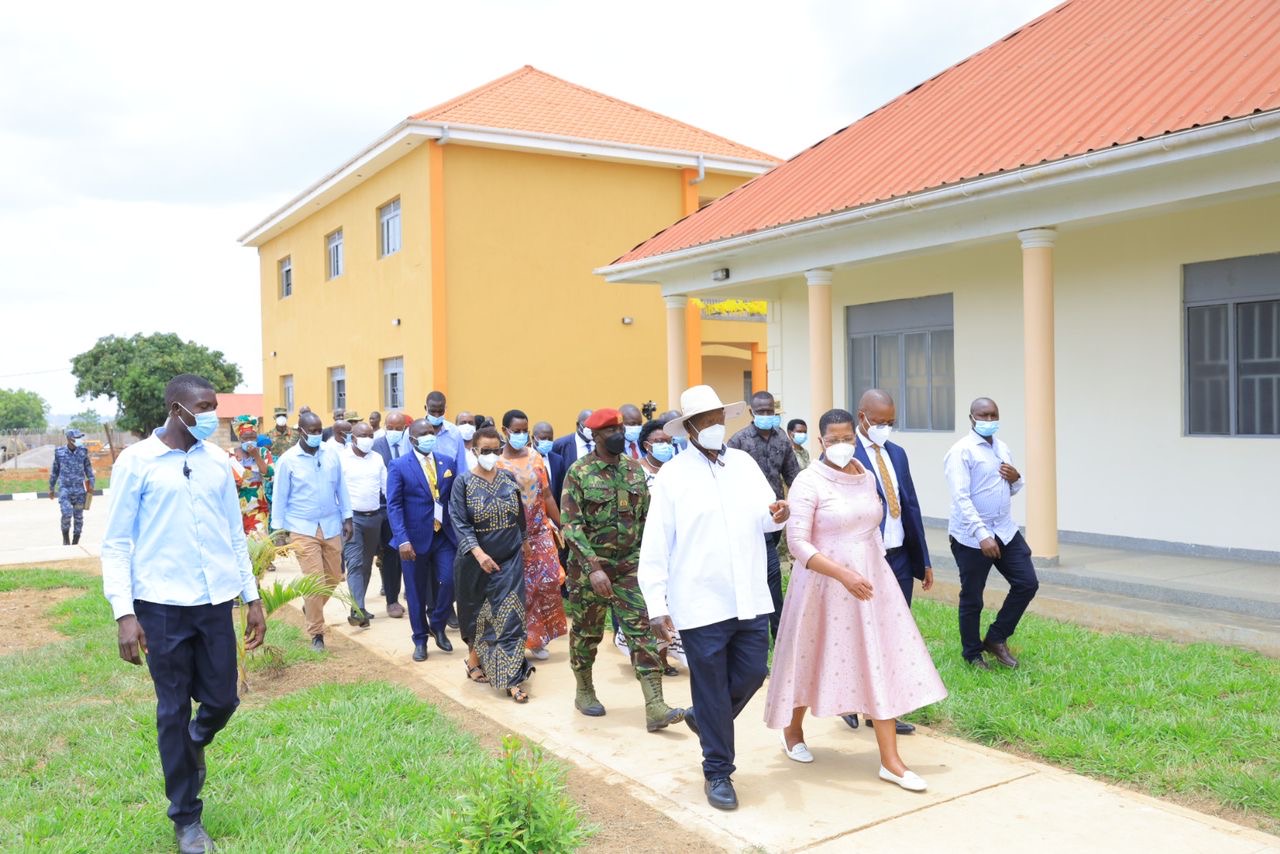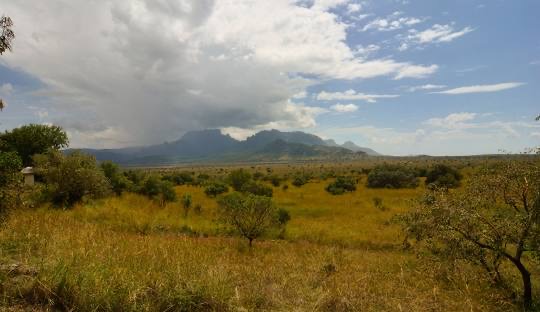Kampala, Uganda: A new study conducted by a team of researchers from Makerere University, Zambia, and Norway has revealed a rabies scare among residents near Pian Upe Game Reserve in Bukedea District.
The eastern district of Uganda is represented in Parliament by Rt. Hon Anita Annette Among Magogo, who is also the Speaker of the Parliament of Uganda.
The other districts at risk are Busia in Eastern Uganda and Kamwenge in western Uganda, according to the authors’ revelations.
Recently, Ugandan President Yoweri Museveni officially opened Bukedea Teaching Hospital which was constructed by Speaker Among, with the intent to provide quality and affordable healthcare for the people of her area of Teso and neighboring districts. This Rabies threat might be one of the issues her hospital might want to pay attention to.
The study titled: Households neighboring wildlife protected areas may be at a higher risk of rabies than those located further away: a community-based cross-sectional cohort study at Pian Upe game reserve, Bukedea district, Eastern Uganda, reveals that households located near the wildlife protected area are at a higher risk of rabies infection compared to those farther away. This implies that even those near game reserves spread across the country may be facing a similar threat.
The community-based cross-sectional cohort study was led by Collins G. K. Atuheire, a Senior Lecturer from the Department of Biosecurity, Ecosystems and Veterinary Public Health, College of Veterinary Medicine, Animal Resources and Biosecurity, Makerere University, Kampala, Uganda.

He was assisted by a team of researchers who included James Okwee-Acai, Martha Taremwa, Paul Ssajjakambwe, Musso Munyeme, Clovice Kankya, Odoch Terence, Sarah N. Ssali, Frank N. Mwiine, Kayla J. Buhler and Morten Tryland from the universities of Makerere in Uganda, University of Zambia, and Inland Norway University of Applied Sciences.
Understanding the Scope of the Study
The study, which has been published in the prestigious Frontiers Journal, was edited by Prof. Catherine A. Gordon of the University of Queensland, Australia, and reviewed by Carlos Landaeta-Aqueveque and Katharina Sophia Kreppel, both professors at the University of Concepcion, Chile, and the Institute of Tropical Medicine Antwerp, Belgium, respectively.
It was conducted between January and March 2023 and involved 302 participants from households located at varying distances from the Pian Upe Game Reserve: less than 4 km, 4-14 km, and more than 14 km and has provided critical insights into the dynamics of rabies transmission in communities bordering wildlife reserves.
The researchers sought to examine the incidence of rabies and identify associated risk factors for both humans and animals living in proximity to wildlife.
The study aimed to test the hypothesis that households closer to the game reserve would exhibit a higher rabies risk than those situated further away.
Using a detailed questionnaire, data was collected on socio-demographic characteristics, recent animal bites, and suspected rabies cases in humans and livestock over the past year.
The study also explored community practices that might contribute to rabies exposure, such as hunting, grazing livestock in the reserve, and collecting firewood from the area.
What the Researchers have found
“The study’s findings were striking,” says the principal investigator Collins Atuhaire. “The incidence of rabies increased significantly as the distance to the game reserve decreased. Human rabies cases ranged from 7.5% to 15.7% depending on proximity to the reserve, while the incidence for dogs ranged from 5.0% to 9.8%,” he told our news desk.
He added that these statistics highlight the elevated risk for communities living closer to wildlife, where interactions between domestic animals and wild animals are more frequent.
Further analysis of the study findings reveals several key risk factors associated with rabies cases among humans in the area.
For instance, households with lower levels of education were more likely to report rabies cases, and those who grazed their livestock within the game reserve faced a significantly higher risk.
Additionally, fetching firewood from within the reserve was associated with a higher risk of rabies mortality.
The study further sheds light on the role of community practices in exacerbating rabies risk.
For instance, 39% of households reported using dogs for hunting, a practice that increases the likelihood of contact between domestic dogs and potentially rabid wildlife, such as jackals.
“Moreover, although all households owned at least one dog, only 47% had vaccinated their dogs against rabies in the past year, pointing to gaps in preventive measures,” Mr. Atuhaire said.
Why Bukedea
The study found that in many parts of the Bukedea district, communal grazing is common, where livestock are left to graze freely on shared land for extended periods without direct human supervision.
“These animals are often guarded by dogs, which not only protect them from wildlife attacks but also serve as potential vectors for rabies transmission if they come into contact with infected wildlife,” the researchers write.
The study’s lead author, Collins Atuheire, emphasizes the importance of these findings for policymakers particularly legislators led by the Speaker herself: “Our research reveals a clear and concerning link between proximity to wildlife reserves and increased rabies risk. The findings suggest that targeted interventions are urgently needed to protect both human and animal populations in these high-risk areas.”
Is Rabies a persistent public health threat in Uganda?
Rabies remains a major public health concern in Uganda and other parts of Africa, according to the researchers.
Despite ongoing vaccination campaigns and post-exposure prophylaxis (PEP) efforts, rabies continues to claim thousands of lives each year. The disease, caused by a single-stranded RNA virus from the family Rhabdoviridae, is almost invariably fatal once clinical symptoms appear.
Over 95% of rabies deaths occur in Asia and Africa, with Uganda reporting approximately 36 human rabies deaths per year, according to recent statistics.
While rabies can affect a wide range of warm-blooded animals, domestic dogs are the primary vector, responsible for about 99% of all human cases globally.
In Uganda, rabies control efforts have been hampered by limited resources, inadequate access to PEP, and insufficient public awareness, especially in rural areas where the disease burden is highest.
Only two out of ten people bitten by a suspected rabid animal have access to PEP in Uganda, with cost and distance to healthcare facilities being significant barriers.
The study also highlights the significant gap in rabies surveillance and reporting. “The lack of accurate and comprehensive data on rabies cases makes it difficult to assess the true burden of the disease and to allocate resources effectively,” wrote the authors.
Implications for Rabies Control and Prevention
The findings of this study have important implications for rabies control and prevention strategies in Uganda and other regions facing similar challenges. The researchers call for enhanced rabies prevention measures, including mass dog vaccination campaigns in high-risk areas, improved public education on the dangers of rabies, and increased access to PEP, particularly in remote communities near wildlife reserves.
“Strengthening rabies control requires a multi-faceted approach that addresses both the animal and human components of the disease,” wrote “This includes not only vaccinating dogs but also educating communities about the risks and providing better access to treatment.”
The study also advocates for the integration of rabies control efforts into broader public health and wildlife management strategies, emphasizing the need for collaboration between health authorities, veterinary services, and wildlife conservation agencies.
The research team recommends further studies to explore the dynamics of rabies transmission in other regions of Uganda and to develop more targeted interventions based on local risk factors.
They also call for increased funding and support from government and international organizations to expand rabies control programs and improve surveillance and reporting systems.
“The big take from my this work is that people living near wildlife reserves like national parks are at more risk of exposure to rabies and if rabies control authorities like MAAIF don’t prioritize these sympatric settings, we would see more outbreaks like that occurring in Busia (due to rabid foxes biting people,” Mr. Atuhaire told us on the phone this morning.
He further revealed that practices such as grazing in game reserves, hunting in game reserves, non-vaccination of hunting dogs, and notable dog meat consumption among DRC refugees in Rwamwanja refugee camp in Kamwenge are potential drivers of rabies exposure.
The Leader Author can be reached at:collinsatuheire@gmail.com and the study was supported by the Norwegian Agency for Development Cooperation (NORAD) through the NORHED-II Program and the project Climate Change and Infectious Diseases – A One Health Approach (CIDIMOH), NORPART funded project titled: Promoting Sustainability of Higher Education through Global Collaboration, Student Program Development, Mobility and Training (EDUPROMO) and Makerere University Research and Innovation Fund (PhD RIF).
More details on this study can be accessed HERE.
About The Author
Arinaitwe Rugyendo
Rugyendo is the Founder and Editor-in-Chief of ResearchFinds News. He’s an accomplished journalist with a rich background in the media industry in Uganda. With over two decades of experience, Rugyendo has held various roles including cab reporter, Bureau Chief, Managing Editor, and Digital Media Editor at renowned publications such as Daily Monitor and Red Pepper. Throughout his career, he has demonstrated a commitment to delivering high-quality journalism and staying at the forefront of media trends. In addition to his journalistic pursuits, Rugyendo is currently pursuing a Ph.D. in Journalism and Communication at Makerere University. He has been recognized for his outstanding leadership and commitment to social change as a Desmond Tutu Fellow and Crans Montana New Leader. Rugyendo also serves as the Chairman of Young Engineers Uganda and Uganda Premier League, showcasing his dedication to promoting excellence and growth in various fields. With a passion for driving innovation and pushing boundaries in media, Rugyendo continues to make significant contributions to the industry. His vast experience, academic pursuits, and leadership roles make him a respected figure in the Ugandan media landscape.

















